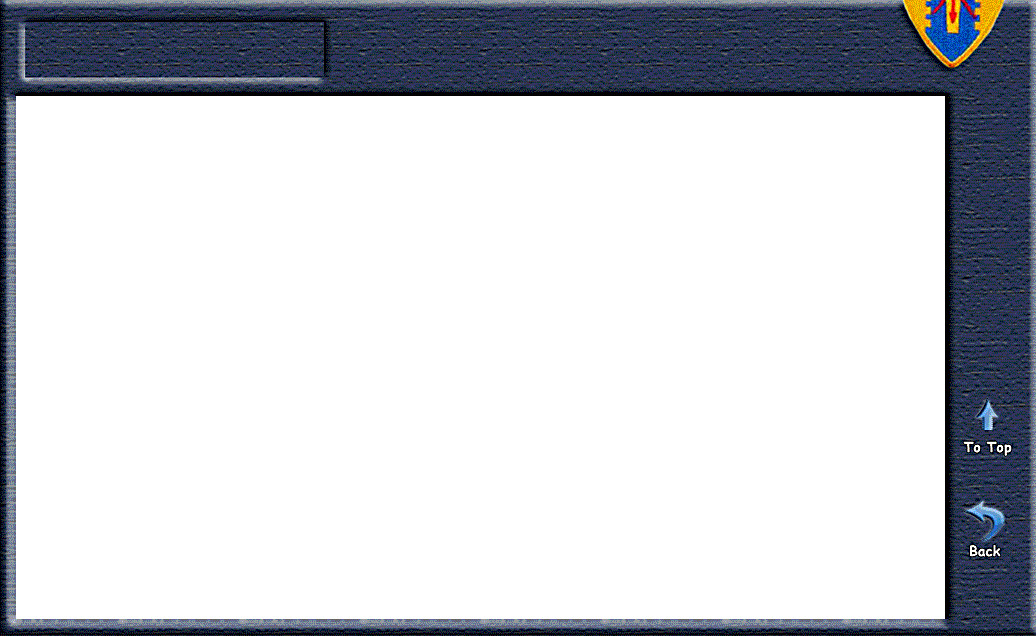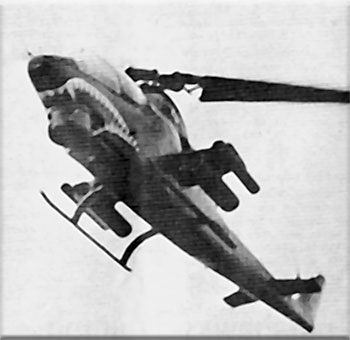

Cavalry Boasts Flexible Air, Ground Team - May 1969

Vol 4 - No 20 - 19 May 1969
CU CHI - Quick and efficient support is the mission of D Troop, the aerial arm of the 3d Squadron, 4th Cavalry.
D Troop's Commanding Officer, Major William Laird of Tampa, Fla., describes his unit this way, "We fly anytime and anyplace that Squadron requests. Normally we have gun teams, flare ships, dustoff and visual reconnaissance flights on stand-by, 24 hours a day. In addition, we fly for other units in the division," Laird explains, "but supporting Squadron is our primary function."
D Troop is sometimes thought of as a mini-aviation battalion. It has OH-6As for visual reconnaissance and Command and Control flights; AH-1G Cobras for gun support; and UH-1 slicks for carrying troops and supplies.
D Troop has one platoon not normally found in an aviation unit, the Aero-Rifle platoon. This is a regular infantry platoon used to develop the combat situation on the ground. An elite unit, the aero-rifles have figured strongly in numerous actions involving the Squadron.
The pilots and aircraft commanders flying the Cobra gunships are experienced and highly qualified. Experience is an absolute necessity when fire support within 50 meters of friendly troops is needed.
This support is awe-inspiring to say the least. With mini-guns, grenade launchers and rockets pounding away at Charlie, it is small wonder that ground troop commanders often pay personal visits to the pilots to say "thanks."
Captain William Cirincione, Cobra platoon leader, has nothing but admiration for his men. "From the crew chiefs and armorers to the pilots, I have never worked with such a dedicated and professional group of men," praised Cirincione of Cleveland, Ohio.
The aero-scout platoon has the most exciting job in the Troop. The aero-scouts fly at tree-top level in front of advancing ground troops to look for the enemy in his lairs. If the LOH discovers Viet Cong, it can engage the target, provided it is not too large. The pilot calls in the fire of his covering Cobra.
Between the two aircraft, the enemy usually winds up with the short end of the deal. This method used to discover the enemy has enabled the ground commanders to change their plans to suit themselves, not the enemy.
The advancing LOH carries a crew chief and observer who both act as door gunners. Their eyes have to be sharp and their reflexes fast. Numerous North Vietnamese Army soldiers have found out just how quick they are, but are not around to tell about it.
First Lieutenant Gerald Odom of Mount Dora, Fla., is the platoon leader. He compares the Indian scout of yesterday to the modern LOH. "When the enemy has to he found, the scout will do it," says Odom. "Years ago it was a man on a horse, today it's men in an aircraft."
The work horses of the Troop are the slicks. They slingload ice to thirsty troopers, carry their mail and resupplies, provide medical evacuation no matter how hot the action is, give illumination with flares, transport the aero-rifle platoon on assaults, insert and extract Rangers, and perform many other missions.
Captain William Reavis of Greensboro, N.C., has command of all facets of slick and aero-rifle operations. "We have pulled as many as five combat assaults in one day and then flown all night when the Squadron made contact," relates Reavis.
My pilots and crew members are nothing less than outstanding," said Reavis. "They exhibit great courage on every mission we have. Not only that, but they sometimes work through the night just to make sure the aircraft are ready to go the next day."
The aero-rifle infantry platoon is a highly mobile force capable of swift reaction to any situation. From scramble horn to insertion is usually only 20 minutes.
First Lieutenant Eugene Carolan, of Detroit, Mich., is the ground platoon leader. His situation is unusual for an aviator. He has earned the Combat Infantry Badge for ground action in addition to his flying duties. He enjoys leading the "Rifles" and considers himself fortunate from the standpoint of experience.
The heart of D Troop is the operations center. Captain William Chiaramonte of Albuquerque, N.M., receives missions from the 3/4 Horse S-3 and passes them down to the appropriate platoon leader. Since the Centaurs could be on many different missions simultaneously, it is necessary that Operations be a well-run and efficient machine.
"We have to know everything to make the Troop function efficiently," Chiaramonte explains. "To insure efficiency I have radio operators, operations sergeants, clerks, and an artillery liaison officer. They're kept pretty busy throughout the day and night. We never close!"
A vital part of the Troop efficiency is the Service Platoon. First Lieutenant Jack Dickson of Tullahoma, Tenn., has direct command of both the maintenance section and supply section. The job which occupies the majority of his time is maintenance of the Troop's helicopters.
Dickson's crews work around the clock, side by side with the crew chiefs from the flight sections. In addition, the avionics and armament sections make sure the aircrafts have good communications and that weapons are functioning properly.
The supply section cares not only for the mundane replacement of pencils and other gear, but also services the fuel tankers and wheeled vehicles in the unit.
Delta Troop is large. It must be to insure combat effectiveness. It is a proud troop, part of a proud squadron. From the pilots to the supply clerk, professionalism is a way of life.
The ground troops know that when the Centaurs are requested, the job will be well done and done fast.
Captain Garrett Marcinkowski of Cohasset, Mass., the Executive Officer of D Troop, sums it up this way, "You name it, we've done it. If we haven't, nobody has."
 GRIN - Shark's teeth on Cobras are synonymous with the ferociousness of D Troop, 3/4 Horse of the Tropic Lightning Division. the enemy has learned to respect the awesome firepower of the Cobra and the accuracy of the Centaur pilots. (PHOTO BY SP4 JOHN T. AGNOLETTI) 3/4 Cav Cobra
GRIN - Shark's teeth on Cobras are synonymous with the ferociousness of D Troop, 3/4 Horse of the Tropic Lightning Division. the enemy has learned to respect the awesome firepower of the Cobra and the accuracy of the Centaur pilots. (PHOTO BY SP4 JOHN T. AGNOLETTI) 3/4 Cav Cobra